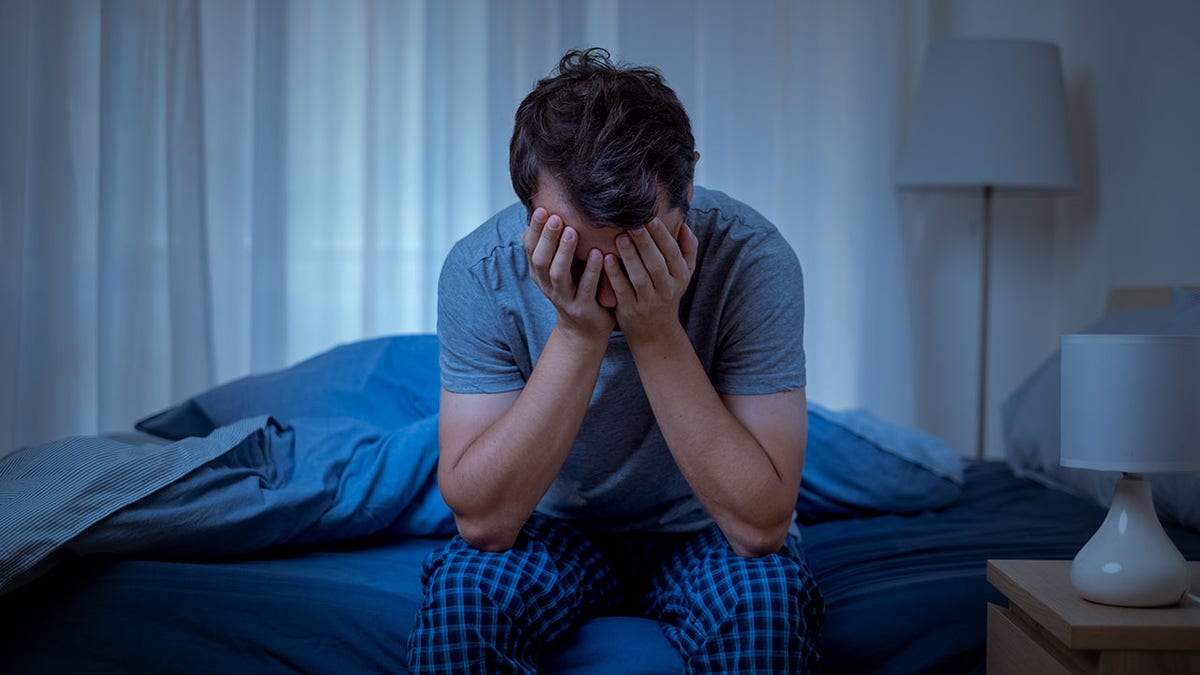This story discusses suicide. If you or someone you know is having thoughts of suicide, please contact the Suicide & Crisis Lifeline at 988 or 1-800-273-TALK (8255).
Seasonal affective disorder (SAD) is more than just dealing with "cabin fever" or feeling down when the weather turns cold.
It’s a depression that occurs with the changing of seasons and affects millions of Americans, including children, each year.
The disease can cause long-lasting damage to your mental health if left unchecked.
Depression affects tens of millions of Americans, with the highest category of major depression for adults occurring among individuals aged between 18 and 25. The specific cause of the condition is not known. Still, several factors such as genetics, biological and environmental play a key role, according to the Centers for Disease Control and Prevention.
WARNING SIGNS OF SUICIDE: WHAT TO KNOW ABOUT PREVENTION, RED FLAGS AND HOW TO DEAL WITH THE ISSUE
The CDC estimates that approximately one out of every six US adults experiences some form of depression during their lifetime. Across all age groups, more than 16 million Americans experience the effects of depression, ranging from mild to severe symptoms that include feeling sad or anxious or having suicidal thoughts.

Seasonal affective disorder is a form of depression that reappears for individuals as the season changes. (iStock)
Treatment for the condition can vary depending on the severity and include therapy and medication. Reach out to your doctor or a qualified medical professional to determine the best treatment if you are experiencing depressive symptoms.
What is seasonal affective disorder?
SAD is a type of depression related to seasonal changes that typically occurs during fall and winter months.
The most affected by the mental anguish and mood disorder see their depression return each fall, with symptoms worsening in the winter before going into a type of remission in spring and summer. It is more common in women and younger people — and with individuals who live in places with long winter nights, according to experts.
BE WELL: PREPARE A DINNER RICH IN VITAMIN D FOR GOOD HEALTH
But for those who never seek treatment, SAD can lead to other forms of depression, DeAnna Jordan Crosby, clinical director of New Method Wellness, told Fox News during an interview in February 2020.
What are the symptoms of seasonal affective disorder?
Symptoms of SAD include feelings of hopelessness, reduced energy and focus, social withdrawal, increased sleep, loss of interest in work or other activities, sluggish movements, increased appetite with weight gain, and unhappiness and irritability.
"The symptoms for SAD can be disguised as typical tropes of winter, but they can become extremely serious," Crosby said.
Part of the population that is considered most at risk for developing SAD includes those who live far from the equator.
"A person should seek help for SAD when their lifestyle is being affected by the symptoms, like a significant energy decrease, having a hard time waking up in the morning, the tendency to eat more and increased weight gain, and withdrawing from family and friends."
Combined, those symptoms could cause a person to miss work or see their relationships suffer, which could further the depression.
What are examples of seasonal affective disorder?
A common pattern of someone with seasonal affective disorder is to experience depressive symptoms in late fall or early winter but recover by the start of spring or summer with sunnier days.
Typical behavior or examples of an individual with SAD include extreme suicidal thoughts, sleeping late into the day, losing interest in hobbies or any outside activities, and feelings of self-hate or guilt, according to the Mayo Clinic.
What is the best treatment?
Part of the population that is considered most at risk for developing SAD includes those who live far from the equator, Crosby said, adding that it may be due to decreased sunlight during the winter and longer days during the summer.
Other risk factors include gender, as women are four times more likely to be diagnosed with SAD than men, and those with a family history or who have been diagnosed with major depression or bipolar disorder.
CLICK HERE TO SIGN UP FOR OUR HEALTH NEWSLETTER
"You shouldn’t just ‘wait it out’ when it comes to seasonal depression," Crosby said.
"While you may be waiting for the symptoms to ‘shut off’ as we’re transitioning to spring, it is vital that you seek treatment for SAD and may want to keep up with it during times of remission."

More than 16 million Americans struggle with depression every year. (iStock)
Treatment options, she said, could include light therapy, vitamin D, medications and psychotherapy. Crosby said she’s even had patients who will plan a vacation around the season to ensure they are visiting sunnier places during the winter to combat their symptoms.
What is light therapy?
A common and successful method for SAD has been light therapy, which is a type of phototherapy where an individual is exposed daily to direct sunlight or intense artificially created light. Outside of depression, this treatment can also help treat patients with sleep disorders.
CLICK HERE TO GET THE FOX NEWS APP
A light box is a typical example of light therapy in which an individual is exposed to at least 10,000 lux of light about 24 inches from the patient's face with their eyes open but not staring directly into the light.
Patients are recommended to use this technique early in the morning to help adjust their mood and ease severe symptoms of SAD.
What is psychotherapy?
Outside of medication, psychotherapy is believed to be another effective treatment method for countering the symptoms of seasonal affective disorder. It is a form of talk therapy in which the patient develops healthy daily coping skills to overcome trauma.
Some psychotherapy sessions may occur in a group or individual environment with the therapist. These sessions are highly confidential and require an extreme level of trust between the patient and therapist.
Alexandria Hein contributed reporting.



















